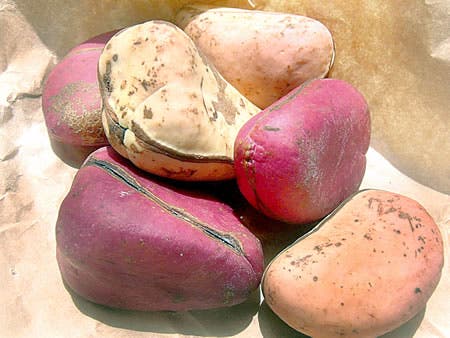USING KOLANUT TO SUPPRESS MORNING SICKNESS CAN AFFECT UNBORN BABY’S BRAIN — Experts Warn
Kola nut is commonly consumed by pregnant women during the first trimester to alleviate morning sickness and dizziness. Now, researchers investigating the potential effects of kola nut on pregnancy say that its consumption in high amounts is potentially dangerous to the baby’s growing brain, Nigerian Tribune reports.
In a new study, researchers said excessive kola nut consumption could have potentially deleterious effects on developing human brain and thus warrant further studies to understand the wider implications for human brain development.
The study to investigate the potential effects of kola nut on the developing brain, with a focus on the cerebellum, demonstrates that kola nut, administered repeatedly at certain doses to pregnant dams disrupt normal cerebellar development in their unborn pups.
The developing brain, especially the cerebellum, is highly susceptible to the effects of many types of chemicals and environmental pollutants. The cerebellum, one of the earliest structures of the brain to differentiate, is highly susceptible to developmental abnormalities and deviation from nomalcy.
Called ‘obi’ by the Yoruba or ‘goro’ by the Hausa, kola nut’s chemical constituents include caffeine and theobromine. The nut has been used as an aphrodisiac and appetite suppressant, as it has been found to cause a decrease in food and water intake. It is also used for short-term relief of fatigue.
About 82.8 per cent of pregnant women experience a phenomenon known as morning sickness during pregnancy. Morning sickness usually comprises nausea, vomiting, tiredness and spitting, and it is more intense in the morning. For some women, it occurs only during the first trimester, while for some others it might occur throughout pregnancy.
Studies have shown that a good percentage of these women resort to taking any substance that can reduce the effects of morning sickness. Amongst the substances consumed in pregnancy is kola nut. But, many substances, including food substances and medicinal plants, have been shown to induce long-lasting behavioural and structural alterations to the brain, even at low doses, especially at critical developmental periods.
To investigate the potential effects of kola nut on the structure of the developing neonatal and juvenile cerebellum in the rat, pregnant wistar rats were administered water (as control) or crude (aqueous) kola nut extract at 400, 600, and 800 mg/kg body weight orally, from pregnancy to day 21 after birth, which was when the pups were weaned. After birth, on days 1, 7, 14, 21 and 28, the pups were weighed, anaesthetised, sacrificed and their brains were cut out for further tests.
It was observed that pregnant dams administered the kola nut extract were more active and aggressive than the negative control group dams that did not receive the extract. There was also evidence of impairment of motor control and posture (balancing) in kola nut-treated dams, as they showed some difficulty in walking on the grid and flared their hind limbs when picked by the tails.
Then, the same week the dams had given birth (three weeks after kola nut administration commenced), weight loss in the kola nut-administered dams were noticed. The mean bodyweight of the control pups was significantly higher than those of the kola nut-treated pups.
The research, written in the 2021 edition of PLoS One, said the study raises certain health concerns that need to be addressed through wider studies, findings from which may necessitate public health campaigns to enlighten pregnant women in particular, and the entire population in general, about the potential risks of excessive or chronic consumption of kola nut.
Although there are similarities in the anatomy and biochemistry of the rat and human brains and doses examined in this study might be higher than what pregnant women or other people who ingest kola nut are ever exposed to, they declared “Nevertheless, our work definitely shows that exposure to kola nut in utero or post-natally, at least at certain dose levels, whether through excessive acute consumption or chronic accumulative consumption, could be detrimental to brain health and function in neonates and young individuals.”
They added, “Even when such untoward effects do not translate to functional (phenotypic) deficits in affected individuals, it is possible that the exposure significantly increases their susceptibility to the detrimental effects of a number of pathological triggers that would otherwise not affect them significantly if they had not been so exposed to kola nut.”
The researchers said further studies will need to examine the potential wider effects of kola nut on the developing brain, including how the fractions of the extract cross the blood-brain barrier and at what rate, as well as other abnormalities in the developing brain of pups from dams that had consumed kola nut during pregnancy.
Previously, an investigation in 100 women who delivered at the Lagos Island Maternity Hospital, showed a significant correlation between kola nut consumption and head circumference. There was a higher percentage of babies whose mothers took kola nut (71per cent) who had a head circumference (30–35cm).
The 1990 study in the Nutrition Research also found that 47 per cent of the mothers who ingested kola nut during pregnancy did so to control nausea while in 53 per cent it was habitual practice. 76 per cent of the respondents consumed kola nut in quantities of 13 to 91 grammes weekly.

